Attendees of our final Career Tools event of 2017 were lucky to see a dynamic panel of creative in-house design leaders: Jaime Barrett – Lead Designer of Cambia Health Solutions, Hafiz Huda – Creative Director at Amazon, Kristin Lasita – Senior Product Designer at Simple, and Dan Richards – Global Creative Director at Columbia Sportswear.
These panelists are well-versed in surviving and thriving in-house. That’s why creatives from across Portland came at 8am—ready to network, to listen and above all to learn. As the audience equipped themselves with a coffee in one hand and a donut in the other, the panel discussion began, moderated by our very own Salvador Orara. Salvador is our Content Director as well as the AIGA President-Elect. He led the panel through an engaging and informative Q&A session.
Covering a wide range of topics from what their ideal employee looks like, to ways of handling a meltdown, the result was a refreshingly honest dialogue. Their advice was both insightful and timeless. It allowed aspiring designers and seasoned veterans alike to understand the big picture a little better.
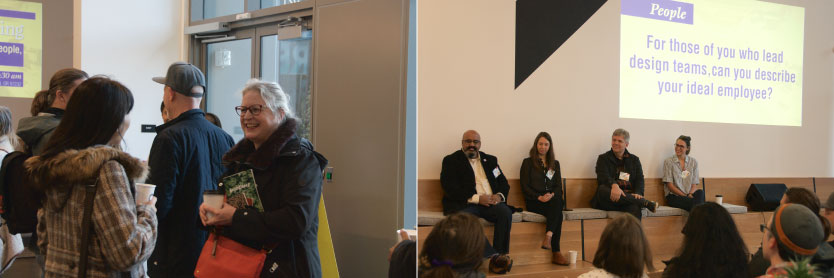
So then, what does the ideal employee look like?
Well, according to Hafiz he pursues those who leave their ego at the door and “dig deeper.” He’s looking for someone who has a stake in the game; he says it’s important to invest time and care into what you pursue because it will show in your work. Jaime agreed, adding that they’re not looking for “pixel pushers,” but rather someone who can engage equitably in solving the problem at hand. Both Kristin and Dan emphasized the importance of process work. It allows them to see not only how you execute, but how you think and work as a creative. Dan followed that up with the gentle reminder that you should not be expecting to do glamorous work all of the time. That is, unless you’re lucky to work in an environment like Kristin who says, “…it’s helpful when the company already loves design.” She notes that it’s important to maintain the balance necessary to “push forward without jumping the gun.” When acting within a company culture that has limited concern for marketing, Dan says it is important to show them the value of the long-term investment in brand identity.
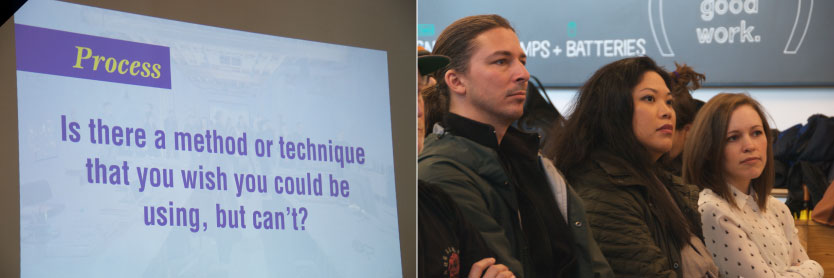
On-the-job method, tool or techniques
When asked what on-the-job method, tool or technique they found themselves wishing they could use more, all of their responses were purely humanist in nature. “Pen and paper,” said Dan, “in-person conversations” answered Jaime, echoed in essence by both Kristin and Hafiz who reiterated the importance of getting feedback from your peers.
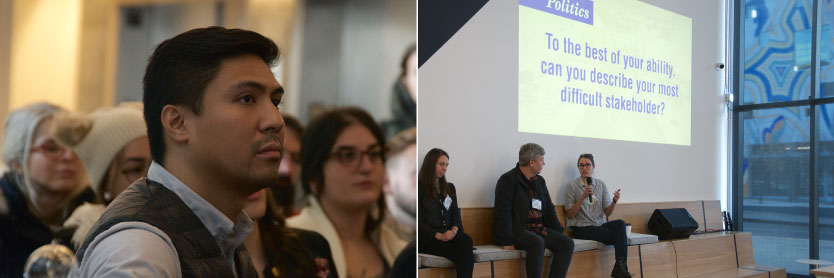
Dealing with difficult stakeholders and saying no
However, the panelists were slightly stumped after being asked to describe a time they had to deal with a difficult stakeholder (in as specific terms as possible). Jaime chimed in with an answer both relevant and clever. “Time!” she said, “For designers, it’s a constant race against the clock.” This was a good reminder that chasing time remains a common theme, despite your experience. After all, a designer’s work is never really done; no matter how much time you invest, it always seems to run out too soon.
But there are ways to achieve optimal performance when it comes to your workflow. Hafiz says that it’s important to “say no, effectively.” Jaime continued, “Always give them what they ask for, but show them other ways that it could be.” Kristin adds “Each person has their specialty. Don’t make decisions for other experts. When roles blend, that’s when it begins to get complicated.” Jaime summarized her thoughts by stating that it comes down to caring about the well-being of your team. It’s important to identify when someone is overworked or underworked. Dan concluded that awareness of oneself and one’s environment at all times will help prevent conflict. However, he added that you simply can’t change some things, so count one win at a time and pick your battles.

How about coping with those seemingly inevitable meltdowns? Hafiz describes one instance as an “awkward version of Game of Thrones” that was resolved only through compromises across various departments. He says the most important thing to remember when things are tense or difficult is to remain flexible. Dan noted preparation is key. Complications can be avoided altogether by developing your presentation skills and learning how to sell your ideas. Harnessing these fundamental skills allows the content to be easily digestible. Whereas Kristin says— even with remote employees— they meet every 3 months to define their obstacles face to face. These efforts allow them to maintain productivity within their collaborations and create successful launches without any defining problems.
At the end of the discussion the panelists were warm and receiving to audience questions as donut crumbs trailed the pathways between the chairs, and the coffee pots expelled a mist of coffee. Portlanders continued to chat 1:1 with the panelists and each other. Like a finale sequence as the curtains close slowly in the theatre, it was the close of the last Career Tools of 2017. We truly hope to see you in 2018 as we continue conversations on people, process, and politics abundant in our brilliant and bountiful design community.
Thanks again to our panelists!
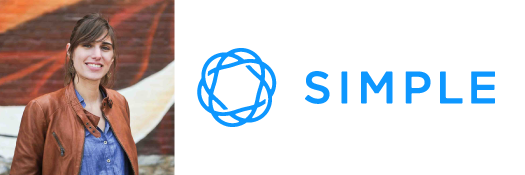
Kristin Lasita is a designer who solves problems. She is currently a senior product designer at Simple – remaking how you think about banking. Kristin works side-by-side with product managers, engineers, and user research on the Simple iOS, Android, and web app.
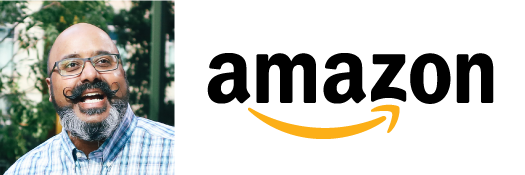
Hafiz Huda is the Brand Creative Director for Amazon Publishing, the full-service publishing arm of Amazon focused on empowering authors to tell great stories for readers across any medium. Prior to his current role, he led the design team at Amazon Creative Services, the internal retail design team focused on major marketing initiatives for programs such as Amazon’s Holiday Gift Guides, Prime Music, Prime Pantry, and Kindle Unlimited. Working in his first in-house role these past five years, he’s often at the hub of multiple product launches and campaigns across Amazon, where he’s an advocate for connecting brand stories at every point of the customer experience.
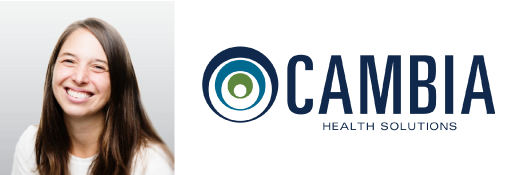
Jaime Barrett leads a talented team of designers at Cambia Health Solutions creative studio. Her team manages over 10 brands, from UX/UI to environment to campaign to social media to brand stewardship all within the health care / tech industry. She specializes in good design (layout, typography, composition), conceptual development, brand strategy, human-centered design and design process as a way to improve creativity on every project.
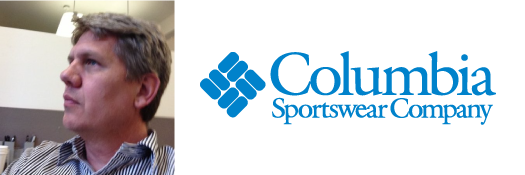
Dan Richards is a Global Creative Director at Columbia Sportswear. He has a reputation for being a passionate, creative professional who excels at being a swell guy. He is capable, in equal parts, of designing a project from start to finish or directing a team of designers to realize his vision. Dan leads with enthusiasm and thoughtfulness, creating solutions that are bold and playful. He is also an expert diplomat. Able to broker solutions that satisfy business needs without compromising the intangibles that make design powerful.
Thank you to our sponsors
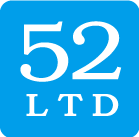
52 Limited is a digital resource company connecting creative + technology talent with leading brands, marketing and engineering departments, start-ups, design firms, advertising and interactive agencies. 52 Limited began as Portland’s only locally-owned creative staffing agency and now serves some of the world’s most recognizable and forward-thinking companies in Portland, Seattle and San Francisco.

CENTRL Office is a collaborative, co-working space in Portland, OR. They provide flexible, full-service office space for some of Portland’s leading entrepreneurs, free agents, start ups, and work groups. Located on both sides of the river, in the Pearl district’s historic GE Supply Co. building, and in the Slate at the Burnside bridgehead at Couch and MLK, in the Central Eastside.
Photography of the event provided by Rowena Thijm. All photos are available on the AIGA Portland Flickr account.